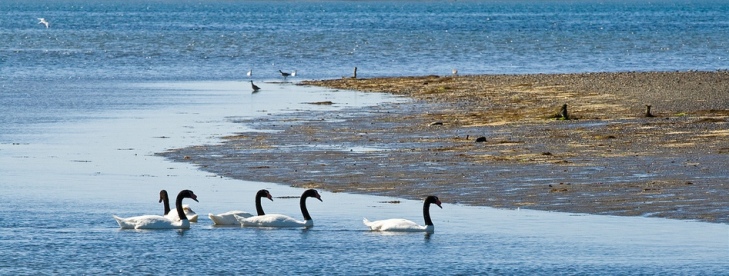Keep your friends close and your enemies closer - Interactions with other species...
As
mentioned in the nutrition
section, black-necked swans are omnivores, feeding on both aquatic
plants and small insects.
These swans are very important organisms within their
environment, often being the key manager of aquatic
plant populations. Due
to the high levels of algae that these swans consume, they are often
the primary regulators of its growth and distribution.
Water conditions are also improved through the regulation of
these plants.
Black-necked swans do not forage for food on land unless forced to
due to their
clumsy feet.
There are some organisms that
use black-necked swans as hosts such as Cyathostoma bronchialis
(gape
worm) and Mallaphaga
(feather lice). These parasitic species can cause neuromotor problems as well
as pneumonia in the swans, often leading to premature death.
Black-necked swans have few predators as adults, but many
animals such as minks and
foxes feed on their young.
Gulls are also a threat, eating the eggs.
In the 18th century black-necked swans were hunted
extensively by humans for their pelts, resulting in thousands of
swans being slaughtered.
Presently these swans are no longer hunted, and their overall
population has reached over 93,000.
 |
 |
| Image of Mallaphaga, a feather lice. | Swan cygnet |
